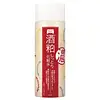What's inside
What's inside
 Key Ingredients
Key Ingredients

 Benefits
Benefits

 Concerns
Concerns

 Ingredients Side-by-side
Ingredients Side-by-side

Water
Skin ConditioningDipropylene Glycol
HumectantGlycerin
HumectantTriethylhexanoin
MaskingPentylene Glycol
Skin ConditioningBis-PEG-18 Methyl Ether Dimethyl Silane
EmollientOryza Sativa Lees Extract
Skin ConditioningRice Ferment Lees
HumectantHydrolyzed Yeast Extract
Skin ConditioningCucumis Sativus Fruit Extract
EmollientGlycosphingolipids
EmollientCitrus Junos Extract
AntioxidantSodium Hyaluronate
HumectantHydrolyzed Hyaluronic Acid
HumectantHydrolyzed Collagen
EmollientSoluble Collagen
HumectantVitis Vinifera Fruit Extract
Skin ConditioningCornus Kousa Extract
Skin ConditioningIsomerized Safflower Acid
Skin ConditioningHydrogenated Lecithin
EmulsifyingLysolecithin
EmulsifyingPolyglyceryl-10 Eicosanedioate/Tetradecanedioate
Skin ConditioningPhytosteryl/Octyldodecyl Lauroyl Glutamate
Skin ConditioningPolyglyceryl-4 Isostearate
EmulsifyingPolyglyceryl-10 Isostearate
Skin ConditioningCitric Acid
BufferingPotassium Hydroxide
BufferingSodium Hydroxide
BufferingCarbomer
Emulsion StabilisingHydroxypropyl Guar
Emulsion StabilisingButylene Glycol
HumectantIsostearyl Alcohol
EmollientCaprylic/Capric Triglyceride
MaskingAlcohol Denat.
AntimicrobialDiethylhexyl Syringylidenemalonate
Skin ProtectingCaramel
Cosmetic ColorantPhenoxyethanol
PreservativeParfum
MaskingWater, Dipropylene Glycol, Glycerin, Triethylhexanoin, Pentylene Glycol, Bis-PEG-18 Methyl Ether Dimethyl Silane, Oryza Sativa Lees Extract, Rice Ferment Lees, Hydrolyzed Yeast Extract, Cucumis Sativus Fruit Extract, Glycosphingolipids, Citrus Junos Extract, Sodium Hyaluronate, Hydrolyzed Hyaluronic Acid, Hydrolyzed Collagen, Soluble Collagen, Vitis Vinifera Fruit Extract, Cornus Kousa Extract, Isomerized Safflower Acid, Hydrogenated Lecithin, Lysolecithin, Polyglyceryl-10 Eicosanedioate/Tetradecanedioate, Phytosteryl/Octyldodecyl Lauroyl Glutamate, Polyglyceryl-4 Isostearate, Polyglyceryl-10 Isostearate, Citric Acid, Potassium Hydroxide, Sodium Hydroxide, Carbomer, Hydroxypropyl Guar, Butylene Glycol, Isostearyl Alcohol, Caprylic/Capric Triglyceride, Alcohol Denat., Diethylhexyl Syringylidenemalonate, Caramel, Phenoxyethanol, Parfum
Water
Skin ConditioningPEG-8
HumectantGlycerin
HumectantDipropylene Glycol
HumectantGlycyrrhiza Glabra Root
Skin ConditioningOryza Sativa Bran Oil
EmollientSphingolipids
EmollientOryza Sativa Bran Extract
Skin ConditioningRice Ferment Filtrate
Skin ConditioningHyaluronic Acid
HumectantHoney
HumectantCynara Scolymus Leaf Extract
Skin ConditioningLactic Acid
BufferingHydroxyethyl Urea
HumectantGlycyrrhizic Acid
HumectantPolyglyceryl-10 Oleate
Skin ConditioningLecithin
EmollientButylene Glycol
HumectantPhenoxyethanol
PreservativeMethylparaben
PreservativeWater, PEG-8, Glycerin, Dipropylene Glycol, Glycyrrhiza Glabra Root, Oryza Sativa Bran Oil, Sphingolipids, Oryza Sativa Bran Extract, Rice Ferment Filtrate, Hyaluronic Acid, Honey, Cynara Scolymus Leaf Extract, Lactic Acid, Hydroxyethyl Urea, Glycyrrhizic Acid, Polyglyceryl-10 Oleate, Lecithin, Butylene Glycol, Phenoxyethanol, Methylparaben
 Reviews
Reviews

Ingredients Explained
These ingredients are found in both products.
Ingredients higher up in an ingredient list are typically present in a larger amount.
Butylene Glycol (or BG) is used within cosmetic products for a few different reasons:
Overall, Butylene Glycol is a safe and well-rounded ingredient that works well with other ingredients.
Though this ingredient works well with most skin types, some people with sensitive skin may experience a reaction such as allergic rashes, closed comedones, or itchiness.
Learn more about Butylene GlycolDipropylene Glycol is a synthetically created humectant, stabilizer, and solvent.
This ingredient helps:
Dipropylene glycol is technically an alcohol, but it belongs to the glycol family (often considered part of the ‘good’ alcohols). This means it is hydrating and gentle on skin unlike drying solvent alcohols like denatured alcohol.
As a masking agent, Dipropylene Glycol can be used to cover the smell of other ingredients. However, it does not have a scent.
Studies show Dipropylene Glycol is considered safe to use in skincare.
Learn more about Dipropylene GlycolGlycerin is already naturally found in your skin. It helps moisturize and protect your skin.
A study from 2016 found glycerin to be more effective as a humectant than AHAs and hyaluronic acid.
As a humectant, it helps the skin stay hydrated by pulling moisture to your skin. The low molecular weight of glycerin allows it to pull moisture into the deeper layers of your skin.
Hydrated skin improves your skin barrier; Your skin barrier helps protect against irritants and bacteria.
Glycerin has also been found to have antimicrobial and antiviral properties. Due to these properties, glycerin is often used in wound and burn treatments.
In cosmetics, glycerin is usually derived from plants such as soybean or palm. However, it can also be sourced from animals, such as tallow or animal fat.
This ingredient is organic, colorless, odorless, and non-toxic.
Glycerin is the name for this ingredient in American English. British English uses Glycerol/Glycerine.
Learn more about GlycerinPhenoxyethanol is a preservative that has germicide, antimicrobial, and aromatic properties. Studies show that phenoxyethanol can prevent microbial growth. By itself, it has a scent that is similar to that of a rose.
It's often used in formulations along with Caprylyl Glycol to preserve the shelf life of products.
Water. It's the most common cosmetic ingredient of all. You'll usually see it at the top of ingredient lists, meaning that it makes up the largest part of the product.
So why is it so popular? Water most often acts as a solvent - this means that it helps dissolve other ingredients into the formulation.
You'll also recognize water as that liquid we all need to stay alive. If you see this, drink a glass of water. Stay hydrated!
Learn more about Water